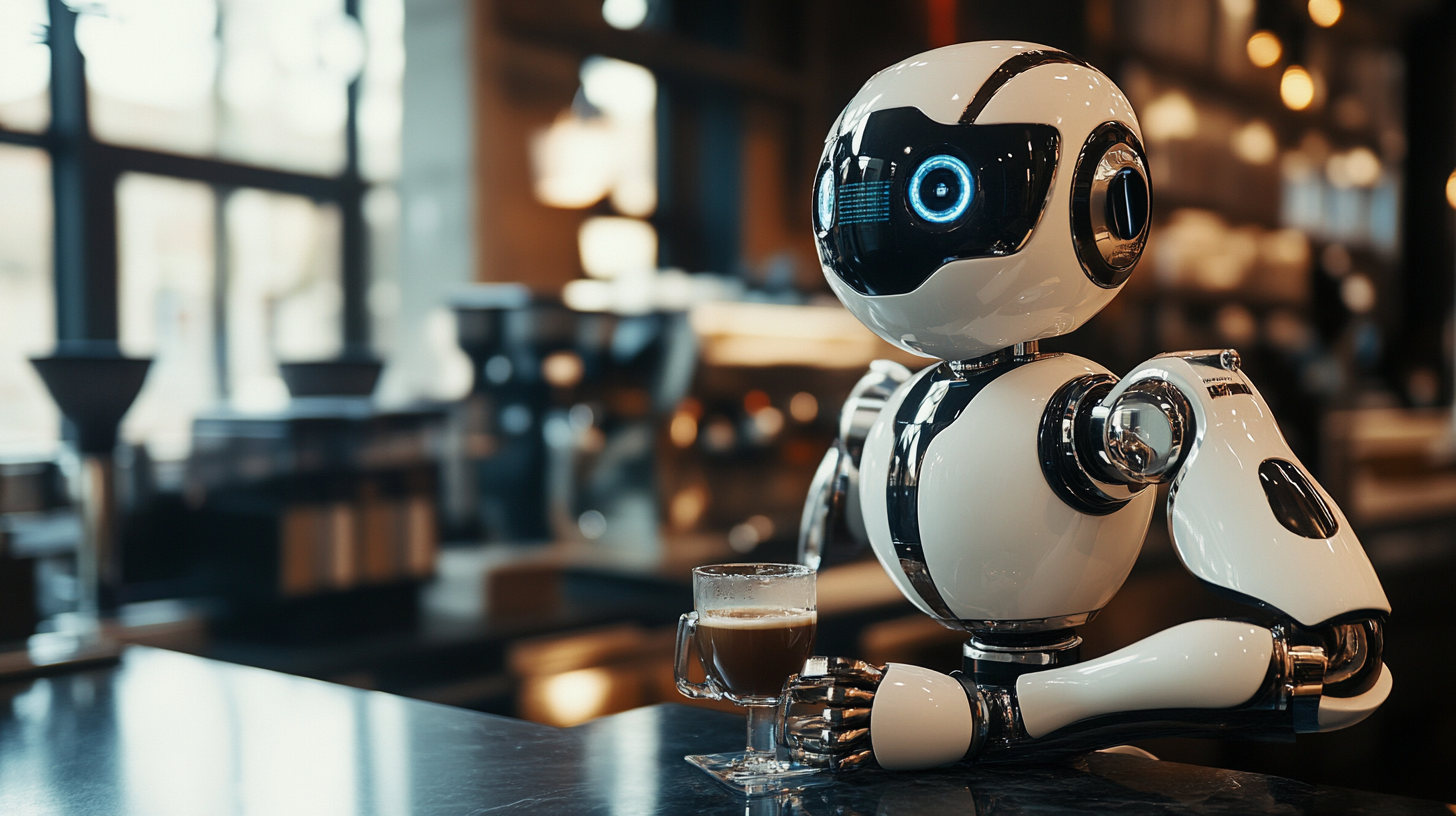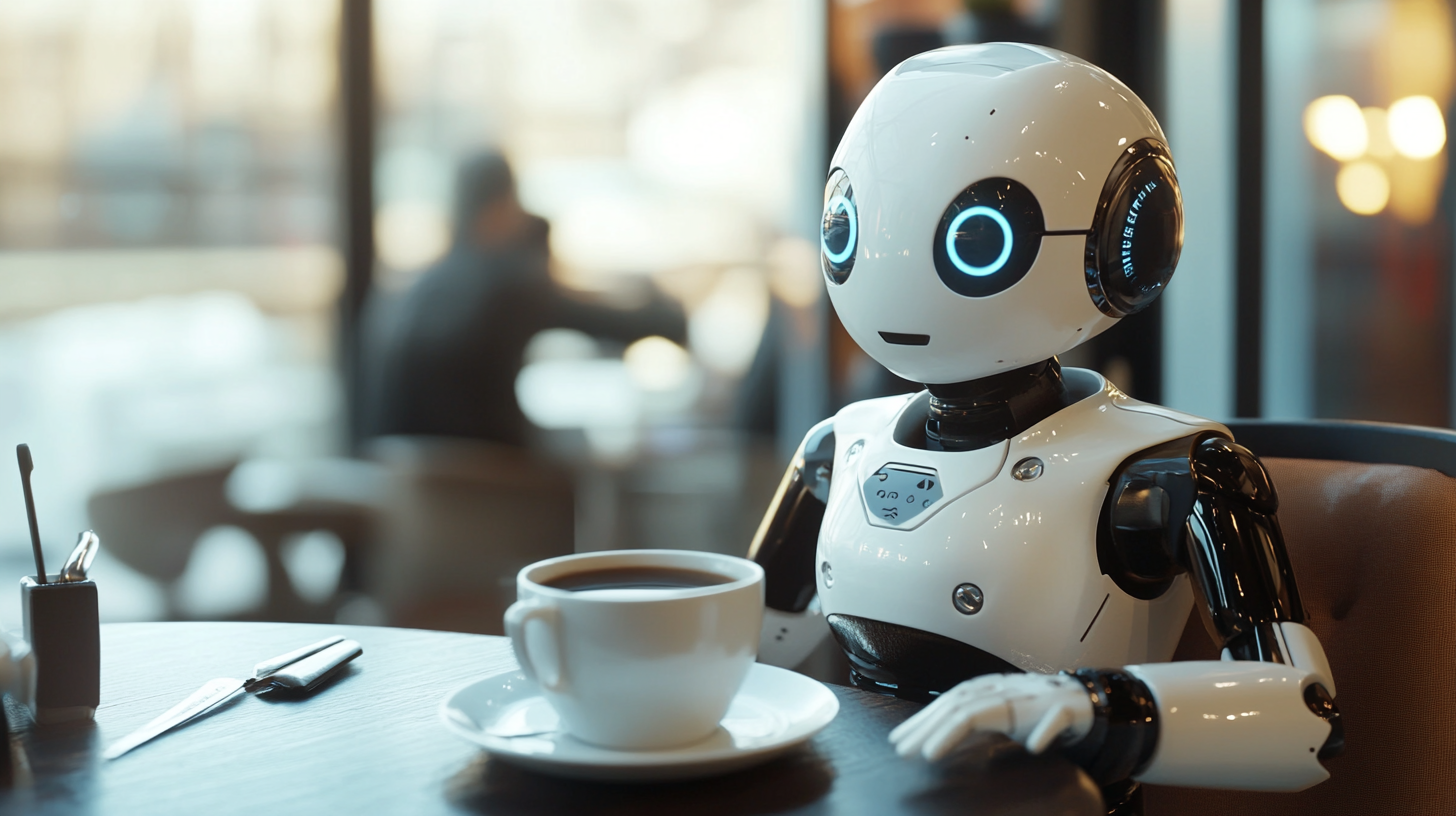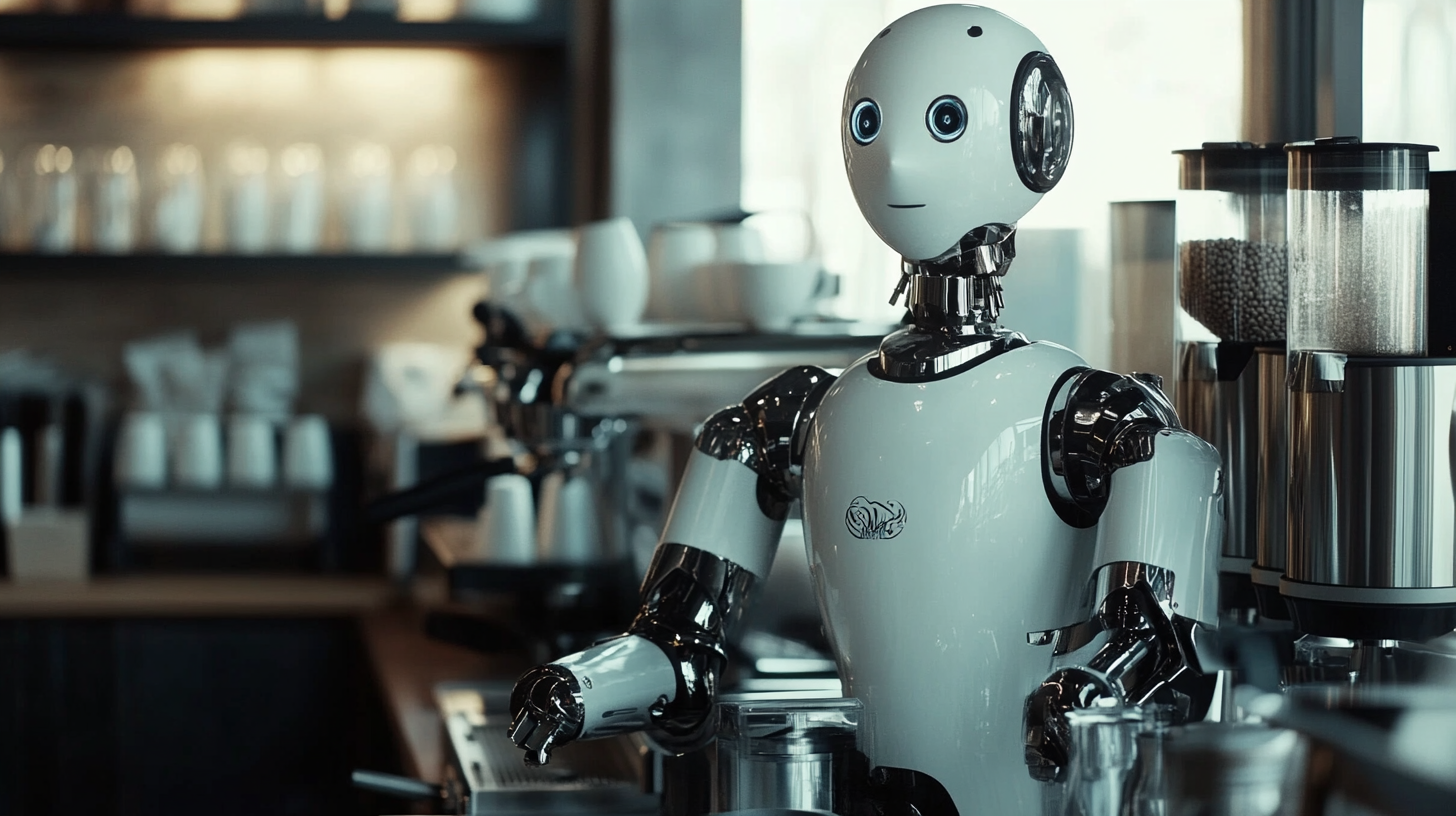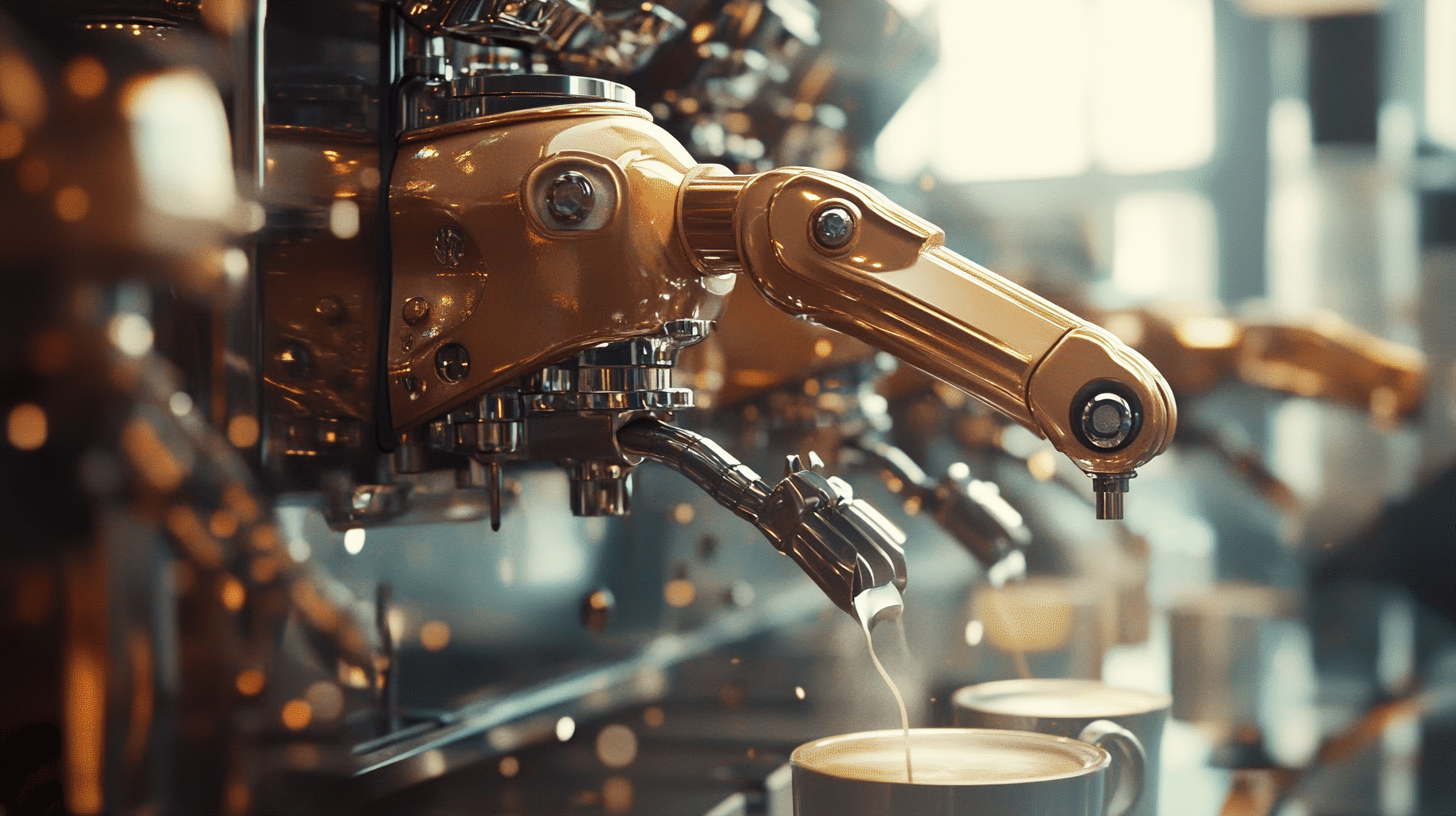

Ultimate Guide to Choosing the Right Espresso Robot for Your Business Needs
An all-time innovation of coffee, the Espresso Robot, strikes in the coffee business. With more coffee drinkers becoming discerning, it is a no-brainer to invest in a feature-rich equipment by businesses whether a lunch truck or a full-blown restaurant. This will tell you how to choose the best Espresso Robot as per your business requirements, so that you serve perfect espresso every time.
Choosing the right Espresso Robot isn't simply going to be a choice; it's a major game-changing decision that can influence enormously how your coffee business runs and how happy your customers are. The options are diffused and it is almost impossible to know what features, advantages, and functions would suit your establishment best. Whether you're looking for something to automate the workflow or prefer to offer a traditionally handcrafted touch with a manual machine, this ultimate buying guide will have lenses and reflection points set up for you to smoothly make the right choice and let your business flourish amidst the competition in coffee.

Understanding Your Business Espresso Needs: Key Considerations
The essence of all the above is to first recognize the wants of the business concerning espresso demands before drawing a line on the particular espresso robot you ought to buy for the business. Remember also to assess how much coffee you are going to offer each passing day; a busy coffee shop or restaurant would need a machine that produces consistently good shots within an amazingly short time. The coffee will normally need to be served in such a manner in these busy establishments. On the other hand, a small establishment may have fun with striking designs or versatility in brewing options. Looking at the customer demographic could also prompt some choice; for example, a stylish cafe catering to a bustling office would do well with an espresso machine that had options for a large menu of specialty beverages. Another thing to think about is the skill level of your baristas. If your team comprises very skilled people, they would really love to work with a high-end espresso robot having many variable settings to allow great freedom in flavor extraction. If our barista is more of a newcomer to the business, one such machine with a lot of user-friendliness plus inbuilt automation could actually ease and reduce the training time for that operation. Consider also the aspects of maintenance: it saves you a lot at the end of the day by having a machine that is easy to clean and service. Do not forget about energy efficiency and sustainability. By putting up machines that put to use fewer resources of water and energy, operational costs are lowered while offering a good chance to buy from increasingly eco-friendly practices that many buyers tend to adopt. These thorough considerations will ensure that whatever espresso robot you get will meet the exact, immediate needs of business while supporting the long-term future goals.

Types of Espresso Robots: Which One Suits Your Operation?
Understanding the different types of espresso machines that can be availed during the selection process will help in knowing the right one for a business. Espresso machines are mainly divided into three categories-manual, semi-automatic, and automatic machines. As indicated in the report by Specialty Coffee Association in 2021, semi-automatic equipment is the favorite with almost 65% of coffee shops due to their ability to balance both worlds-the control required in fine-tuning the extraction process as well the automation that makes the job easier for baristas.
Manual espresso machine which is rare will find a place in a high-volume application as impressive as the specialty, high-end, artisanal coffee shop that sells crafted quality. Research study conducted in 2022 indicated that such coffee businesses using manual machines have an average of 30% increase in customer satisfaction ratings because they are allowed to create an individualized experience of brewing. On the contrary, with the increased popularity of the automatic machine is for fast-paced work hour use wanting efficiency. The National Coffee Association indicated that these establishments using totally automated machines could increase their input by as much as 40% due to the typical rapid-turnaround power demanded of modern customers.
Finally, the size of your operation and the expectations of your customers should be included in your considerations of whether or not to have an espresso robot available. A high-end café specializing in high-quality specialty drinks would call for a semi-automatic machine to which their baristas would have the possibility to attain that level of quality in their servings. At the same time, the high-throughput house might prefer the automatic to cope with the demand. Each type of espresso robot brings something special, and this can make a huge impact on the success of your business as well as customer satisfaction.

Essential Features to Look for in an Espresso Robot
All the inventions can't be credited just to one budding company in the area of humanoid robotics. This organization is quite often referred to as the "Cradle of Humanoid Robotics" within China. This very designation is sufficient to indicate how pioneering it has been and to what extent it has impacted the lives of many industry professionals who have taken their paths afterwards.
The first feature that has to be considered in detail when considering such applications involves the humanoid robot's functional flexibility in the environment where it must function. For instance, high-precision perception and adaptive control technologies are a keynote characteristic of advanced humanoid models. Such features would allow a robot to manipulate sensitive material components with damage control from operational efficiency, as per precision assembly tasks. This level of sophistication could radically transform manufacturing workflows across a variety of industries.
It should also not be forgotten that humanoid robots have open capabilities for integration with other forms of automated systems. Thus, robots that can seamlessly work alongside autonomous logistics vehicles become a key part of a cohesive operational ecosystem and allow companies to optimize time waste, streamline processes, and improve productivity overall. Companies have no option but to start prioritizing these basic complementary features in their pursuit of the perfect humanoid robot for specific operational needs as competition heats up.

Budgeting for Your Espresso Robot: Cost vs. Quality
The budget for espresso robots should be on the same note of balancing one's costs with the qualities of the machines. Initial investments can vary from sufficient amounts depending on the type and brand of the machine. It can also be tempting to go for cheaper espresso machines, but they won't give you as much durability or consistency needed in any busy working environment. All those models may require a much higher initial investment, but those machines are really long-lasting, perform better, and would eventually give you a higher return on investment over a period.
Quality does not just affect the longevity of a machine, but it also affects the end product. An espresso robot lacking in quality might give an inconsistent shot, which would dissatisfy customers. When customers have a change in taste because they can no longer maintain the same level of quality, this will, in turn, affect customer loyalty and impact the bottom line. Investing in a high-quality espresso robot ensures that every cup of coffee provides your expected quality, thus leading to a good reputation, which will ensure repeat customers.
Last but not least, add up the total cost of ownership. Saving money up front with an inexpensive espresso robot can lead to increased maintenance costs and more frequent breakdowns than other premium equipment later. The higher costs of the best machines usually allow for better warranties and customer support, alleviating future headaches. Therefore, while considering the various alternative machines in the future, consider a cost in terms other than the immediate cost of acquisition and weigh the future benefits of investing into a dependable, high-quality espresso robot that meets the demands of your business.
Maintenance and Support: Ensuring Longevity of Your Espresso Machine
When planning for an espresso robot to serve your business, maintenance and support are two very important features that will assure the longevity and performance of the machine. Regular maintenance will not only provide a consistent quality of beverage but also save you from any cost associated with repairs down the line. Routine maintenance, including cleaning, descaling, and internal inspection, can prolong the life of your espresso robot significantly. The best practice would be to follow the manufacturer's recommendations for maintenance.
On top of maintenance services, good customer support would transform operational efficiencies from good to great. Good espresso machines come with access to technical support or replacement parts. The key part here is that when something happens, they do not have to wait for hours for it. Choose a manufacturer or vendor who will offer full support services, including training for staff, troubleshooting guides, and accessible spare parts. This step toward assistance would be the most attractive and effective way to maximize the machine potential and maintain the highest level of service for customers.
Finally, buying the right espresso robot is more than the upfront cost. You have ensured that the hardware serves the purpose of prolonging customer satisfaction while promoting the use of the equipment in maintenance and hardy support options. The investments you make in these areas will come back to you in terms of performance and dependability; they will be part of solid business strategy.